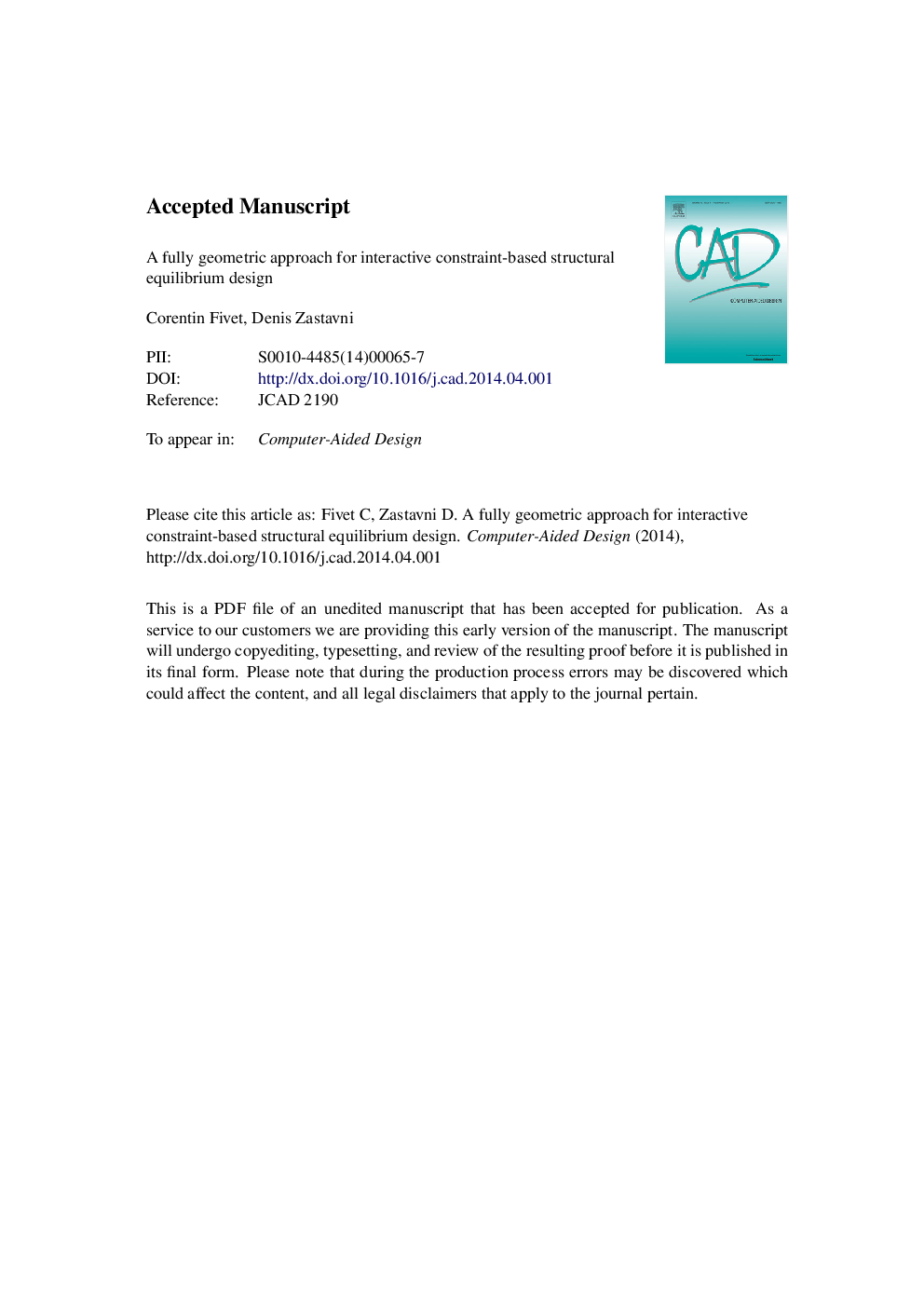| Article ID | Journal | Published Year | Pages | File Type |
|---|---|---|---|---|
| 6876512 | Computer-Aided Design | 2015 | 23 Pages |
Abstract
This paper introduces computational techniques to support architects and structural designers in the shaping of strut-and-tie networks in static equilibrium. Taking full advantage of geometry, these techniques build on the reciprocal diagrams of graphic statics and enhance the interactive handling of them with two devices: (1) nodes-considered as the only variables-are constrained within Boolean combinations of graphic regions, and (2) the user modifies the diagrams by means of successive operations whose geometric properties do not at any time jeopardize the static equilibrium. This constructive approach enables useful design-oriented capabilities: a graphical control of multiple solutions, the direct switching of the dependencies hierarchy, the execution of dynamic conditional statements using static constraints, the computation of interdependencies, and coordinate-free methods for ensuring consistency between certain continuums of solutions. The paper describes a computer implementation of these capabilities.
Keywords
Related Topics
Physical Sciences and Engineering
Computer Science
Computer Graphics and Computer-Aided Design
Authors
Corentin Fivet, Denis Zastavni,
